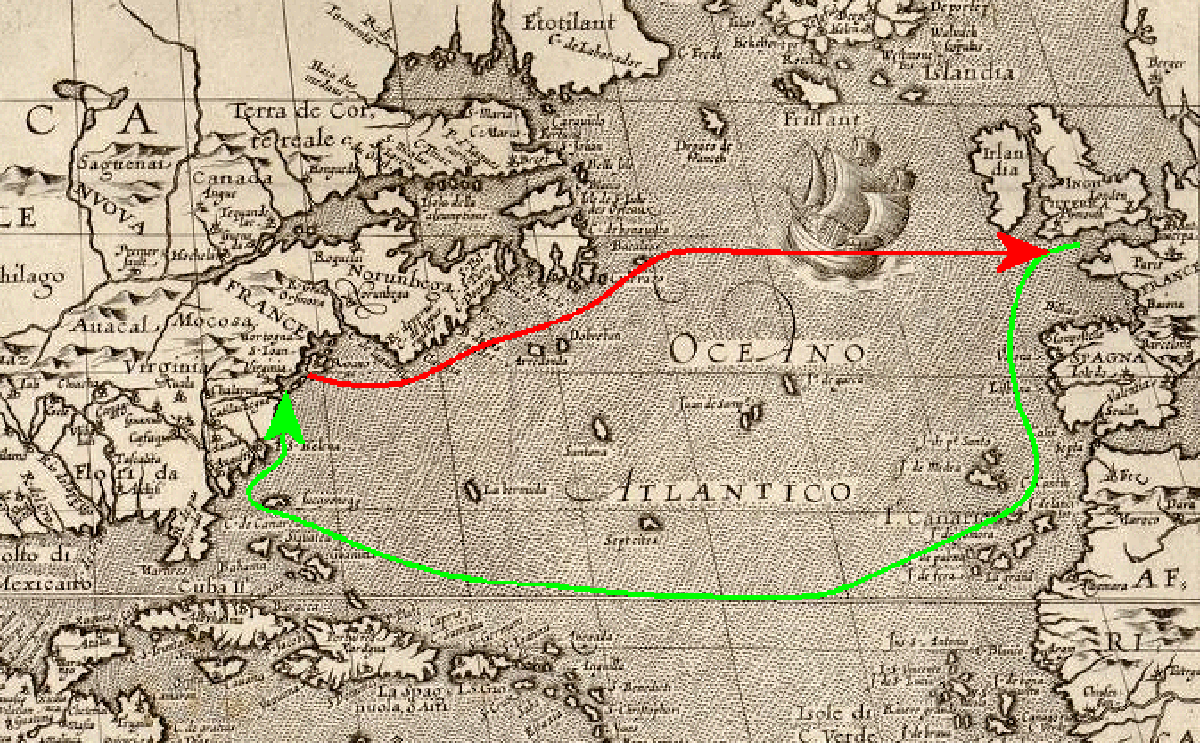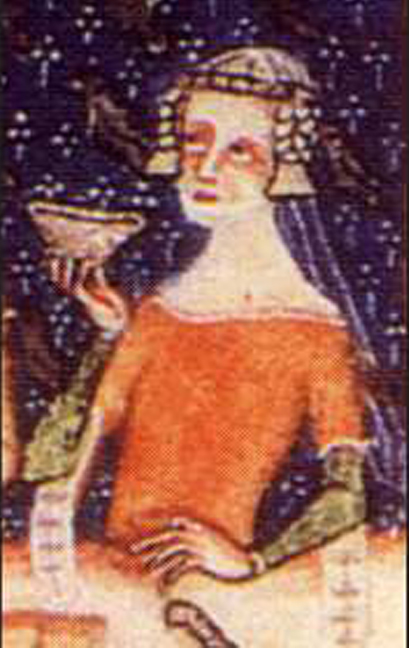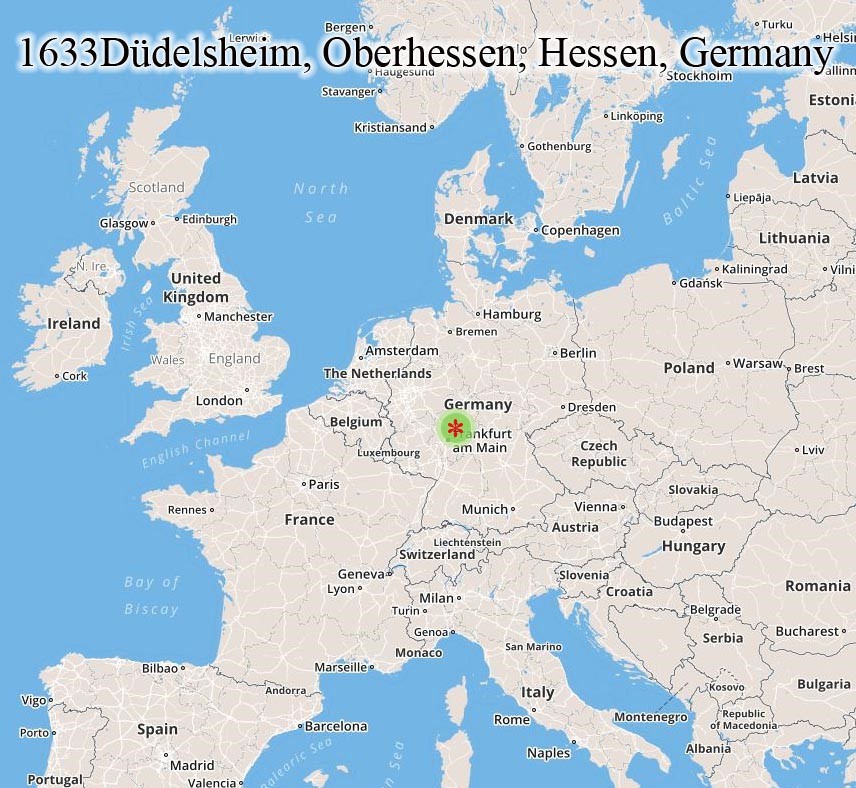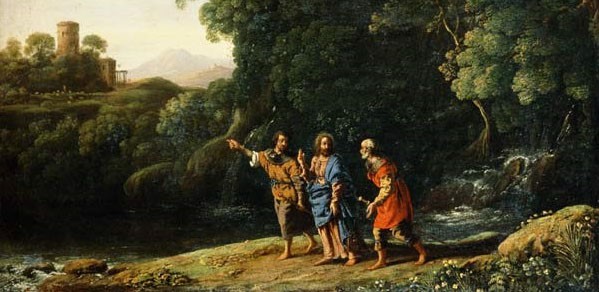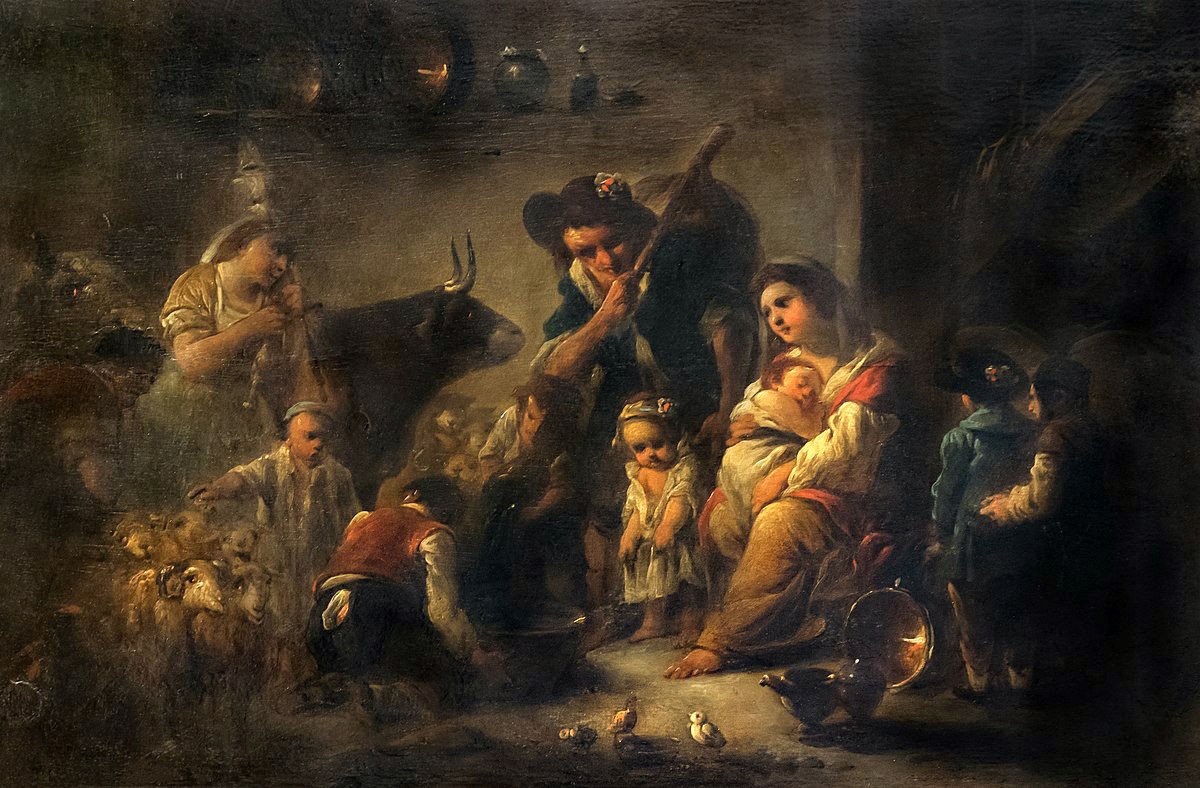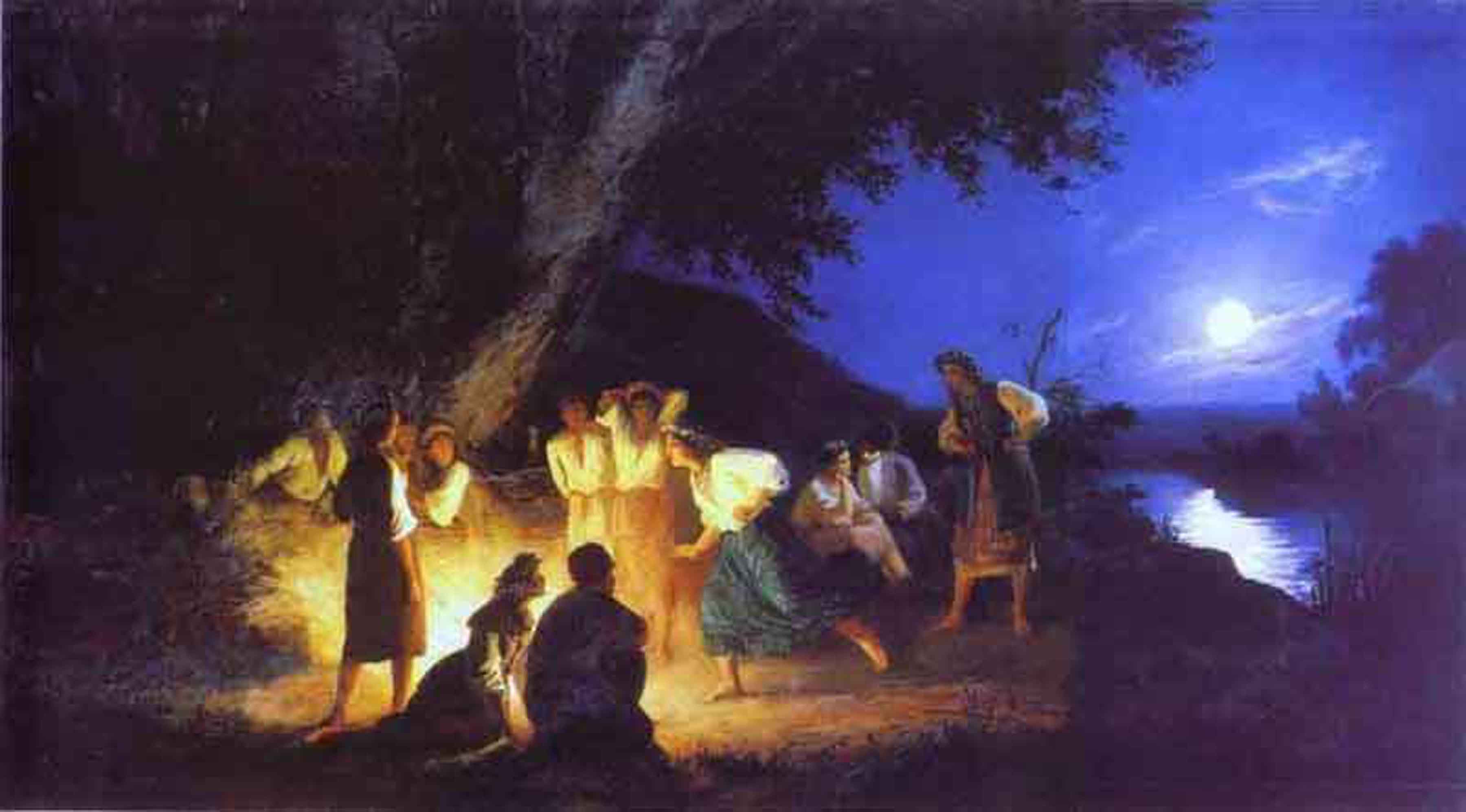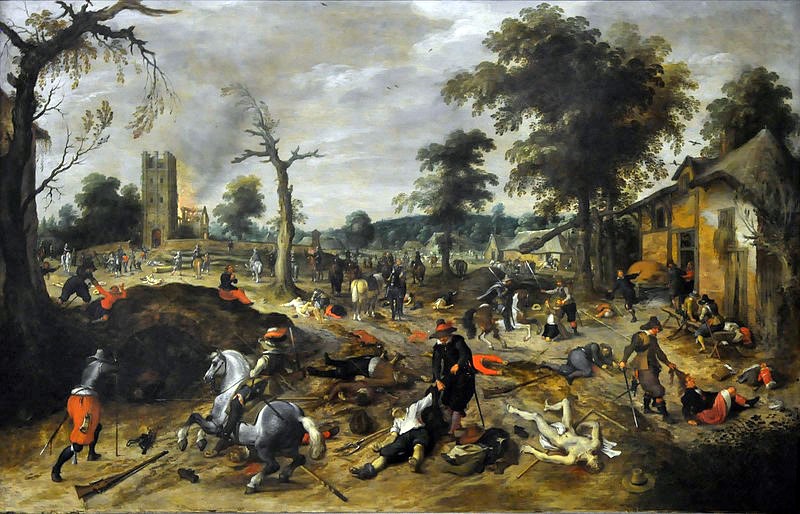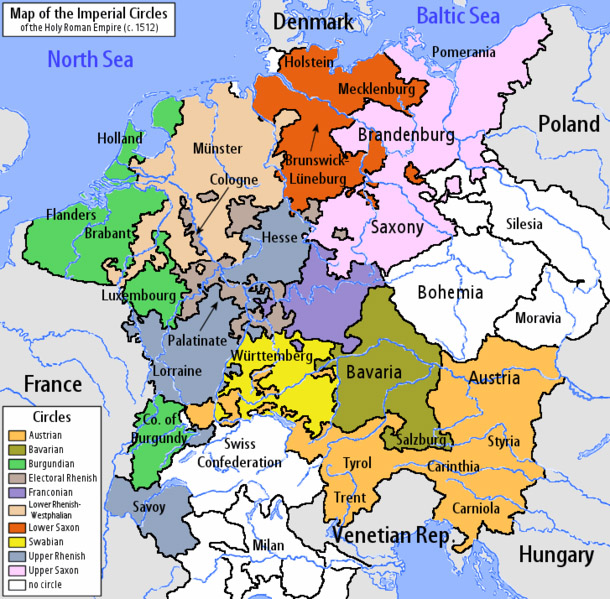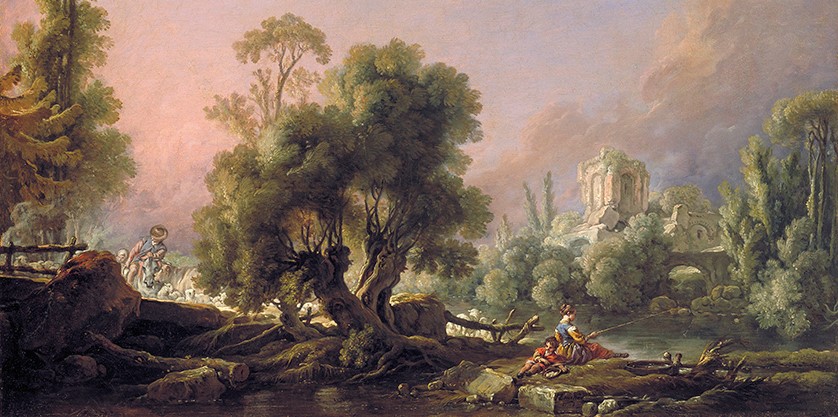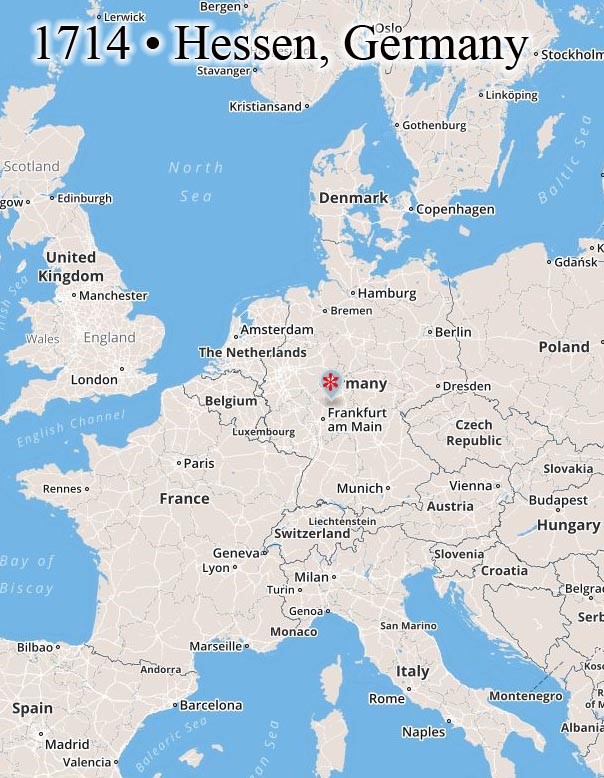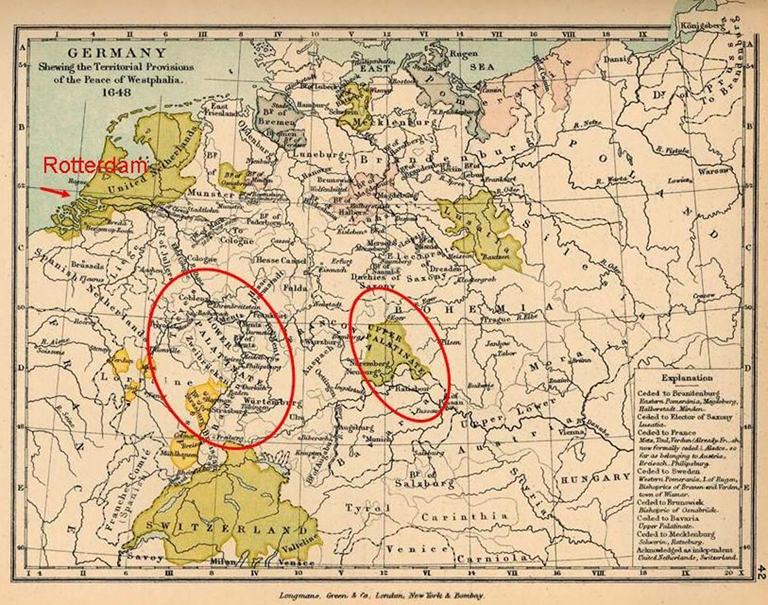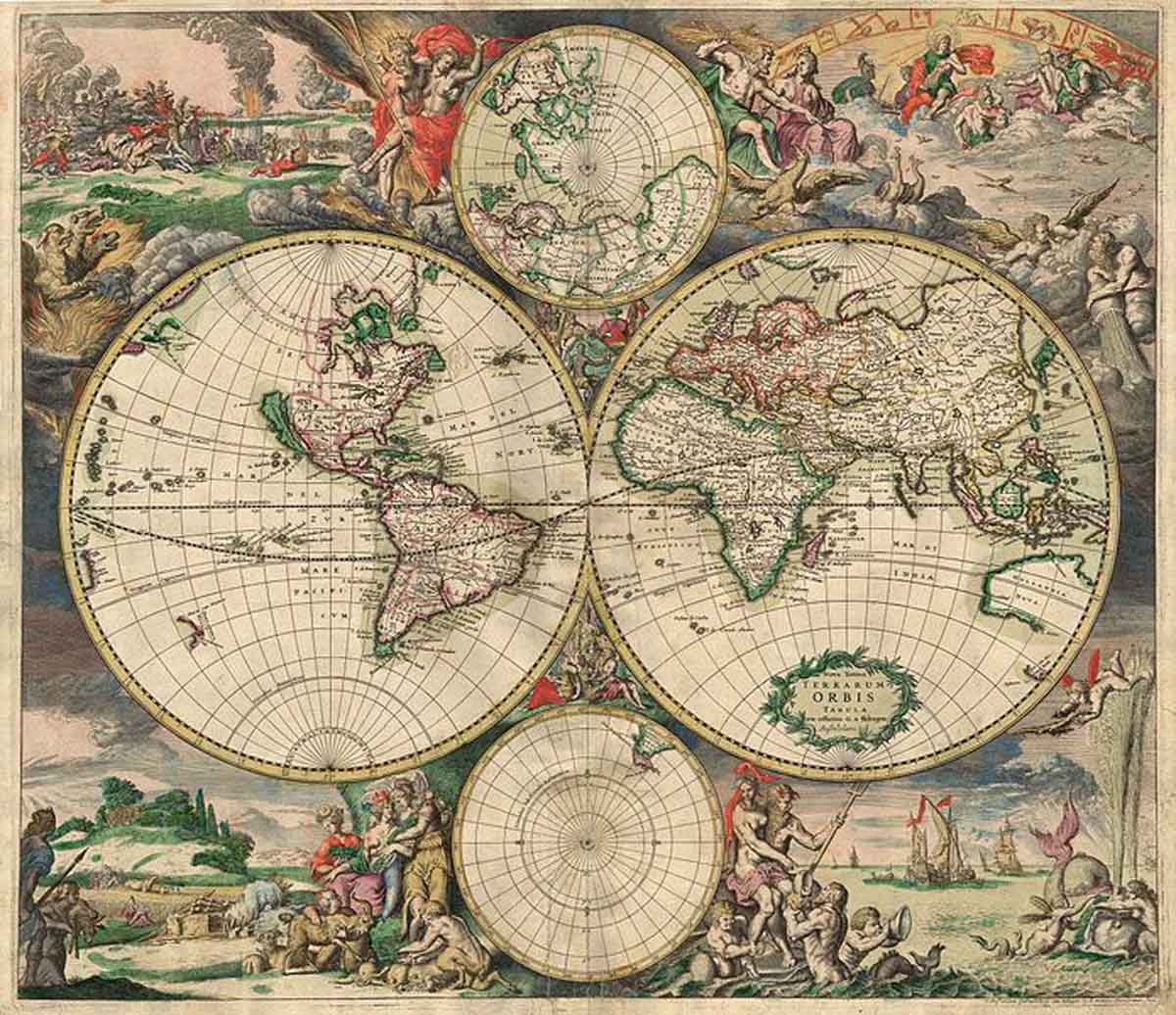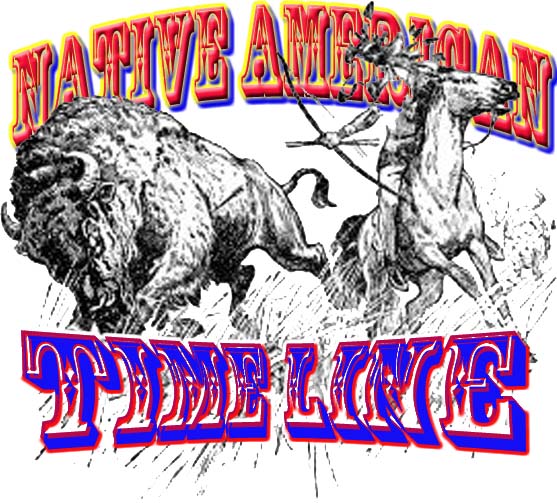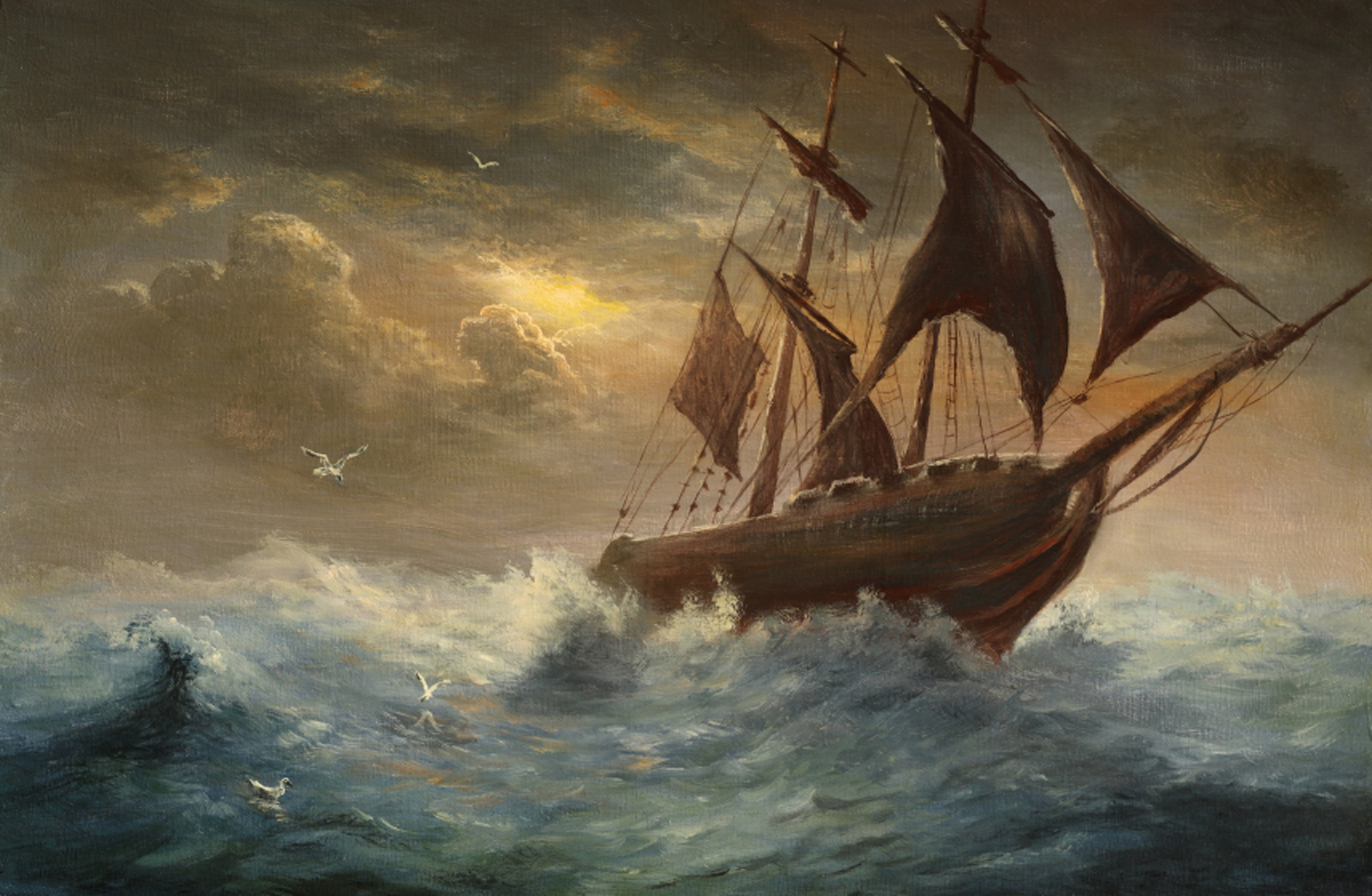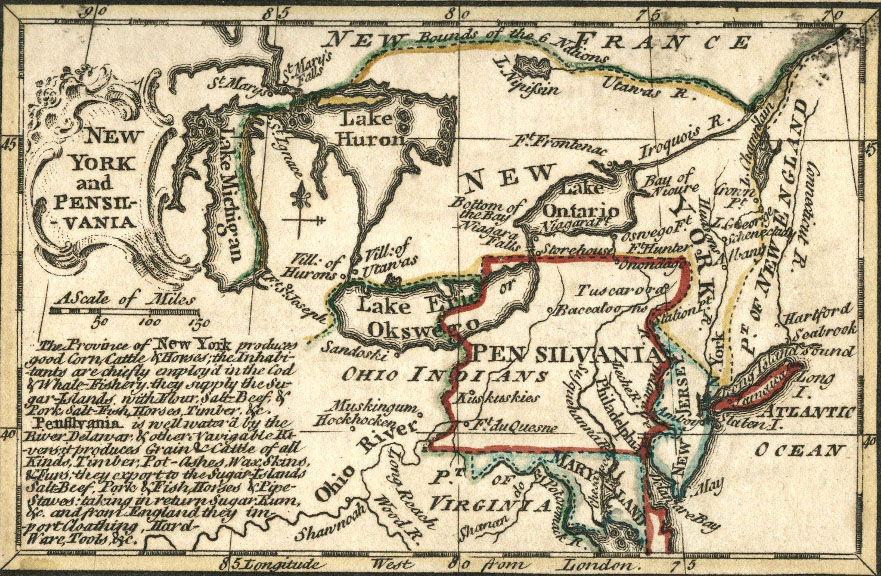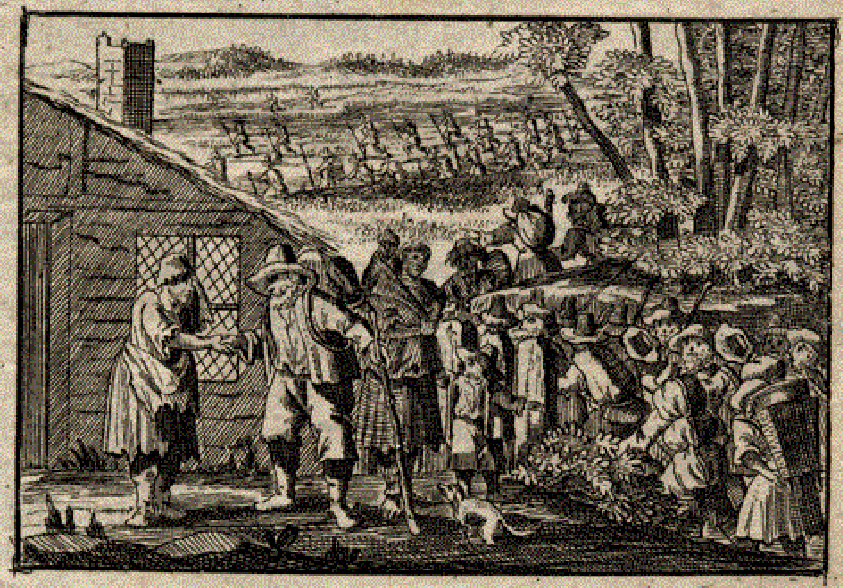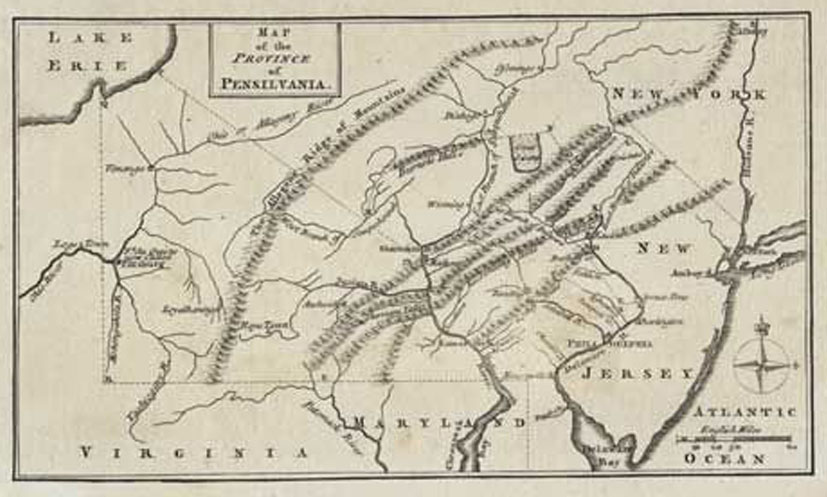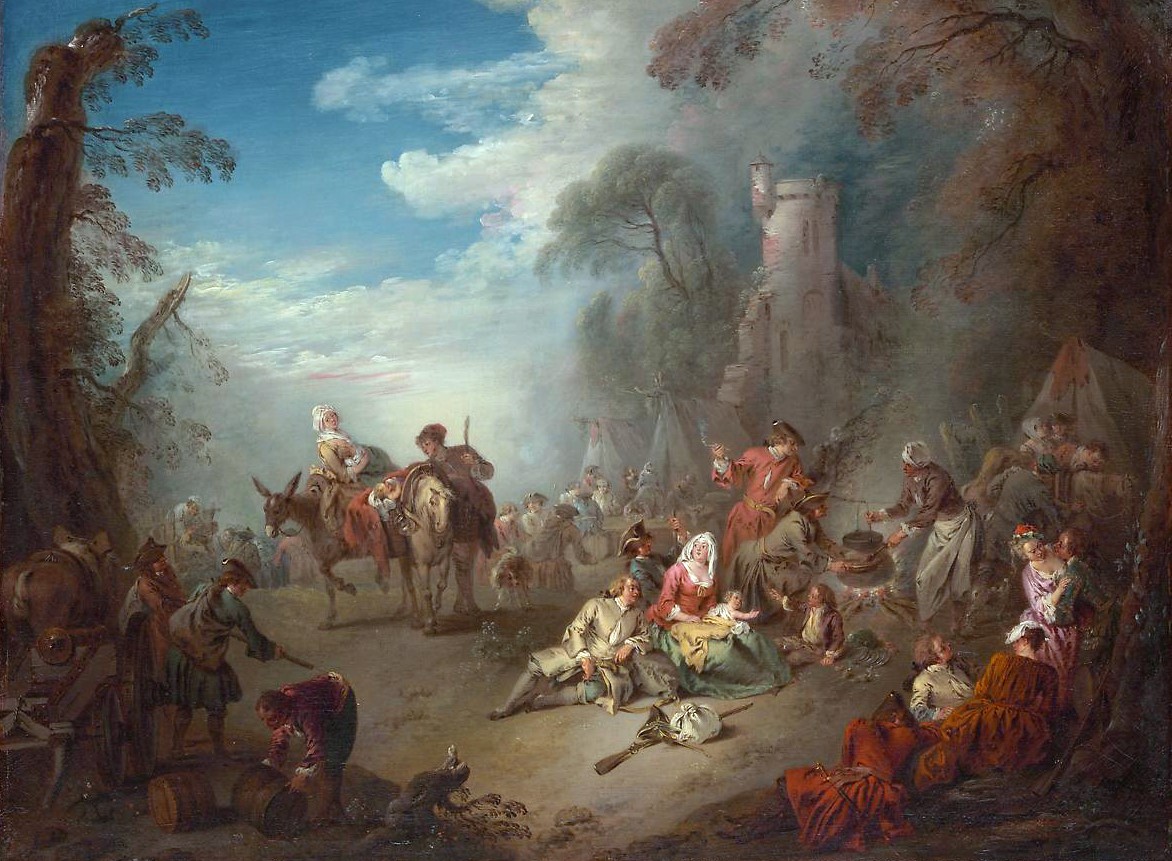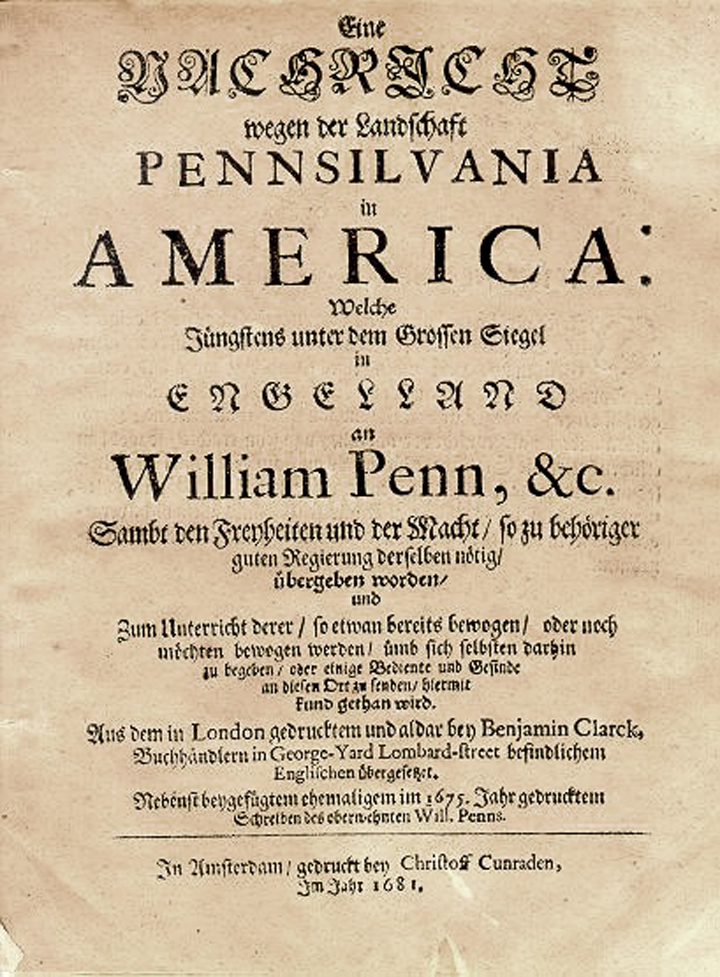From England to America
Timeline 1600 – 1648
Just before stepping into the coach, Elisabeth did something that surprised everyone. Johann offered to help her get into her seat by reaching out his hand, but she did not take it and reached for something else inside the coach. Johann was a little puzzled at first, but he could see what she was after, and he gave her a smile of approval. With her left hand still in the coach, Elisabeth motioned to Peter with her right. And in a whisper, she said to him, “I have noticed that you are a very bright young man, and you have the same curiosity as my cats back home.”
Her manners were so pleasant, and she talked directly to Peter, making him feel very comfortable. He followed her directions and joined Johann and her at the coach. The horses stirred a little as he approached them because he had jumped over a stump to get there. He took one more half stumble, and he joined them. Elisabeth held out her hand, “Here, let me help you,” she giggled. “I have something for you.”
She had been watching Peter’s reaction when he saw a glass cup for the first time. His amazement really got her attention, and now she wanted his. She said, “Nothing is sweeter than love, nothing higher, nothing stronger, nothing larger, nothing more joyful, nothing fuller, and nothing better in heaven or on earth.” Elisabeth put her hand on Peter’s shoulder as she gave him something wrapped in a cloth. She leaned over and whispered this time in Peter’s ear, “Here, take this with you to remember the love we all shared today.”
Peter eagerly opened the cloth, and she continued saying, “I watched you, Peter, admiring this cup. And it gave my heart great joy, and now I receive even greater joy by giving it to you.” Opening the cloth, he saw it was the cup. The very same cup they had shared during the communion meal together. She smiled and said, “The nourishment of the body is food, while the nourishment of the soul is feeding others.” Peter could hardly speak, but he did, “Thanks be to you, and pray tell me, how, you being a maiden, can you talk so smart like these men?”
Her answer was this, “If it were customary to send maidens to school and teach them the same subjects as are taught the boys. Then they would learn just as fully and would understand the subtleties of all the arts and sciences.”
Woman with a cup
Elisabeth then put her arm around Peter and said one more thing. She spoke to him as if no one was there but the two of them. The lady talked to him like the mother he never got to know. She spoke to him with a love he could feel. “Keep this cup, Peter. Keep it safe and remember this day and the Lord’s supper. Then when you have your own family, your children, you can pass it on to them.” She smiled at him, but he was not too sure how to take what she was saying. He was not ready to have a family just yet.
But when he did have his own family, Peter remembered that day very well. He celebrated the Lord’s supper once a month with his family. While Peter broke the bread and passed the cup, he told the story of his first communion meal. He took special care of the cup, and his children looked at it while he spoke. Peter and his wife Anna Klink had six children together Johann Henrich, Maria Elizabeth, Eva Dorothea, Johann George, Juliana, and Johann Ludwig (1685 to 1746, 7th great grandfather.)
Johann Ludwig’s place of birth 1685
Peter gave his three sons the same first name of Johann after Martin Luther’s son Johann. It was a life-altering experience for Peter the day they met, even though it only lasted a moment in time. He wanted his sons to never forget and pass on the story about Johann, so; he named each of them after him. Johann Peter, Johann Samuel, and Johann Ludwig Knauss.
Three sons
Peter told many stories about the family’s past and tried to direct his children’s future paths. He had picked up the torch of storytelling from his father after he passed on. Knauss had told his son Peter when he was young, “A tale is but half told when only one person tells it.”
A medieval peasant family
He told the tales his father told him around the fire at night. He acted out the parts while playing a small lute. Peter thought that he was not as good at it as his father was, but all the children loved his performances. They said that “He was the biggest kid in the family.”
The biggest kid in the family
Peter could remember how things used to be simpler when his father told the stories back then. The struggle of just living did not seem so hard back then as it had become now. Even in their tribe, there was a division of thinking. Some insisted on following the ways of the Roman Catholic Church, and others in the tribe found being released from the church’s control over everyday life a blessing.
Tales around the fire
The tribe rather quickly dissolved into separate families, all going in different directions. It seemed to Peter that his people did not talk to each other like they used to do. They were all more concerned with their lot in life and had less concern for others. Some members had left the tribe and moved on, seeking out a living any way they could.
Timeline 1658 – 1690
The land that Peter and his family called home was good for its inhabitants, many of whom were farmers or owned vineyards. But unfortunately, its location was subject to invasion by the armies of Britain, France, and Germany. They did not leave much for the people that lived there and called this place home.
All settlements were subject to invasion by foreign armies
During the 30-year war of 1618-1648, Peter Lee served in the Imperial Bavarian and Swedish Armies. He survived and returned home and became a small-time farmer like his father before him. Peter Lee was appointed Capt. of the militia in his community. On the first day on the job, he and his little army provided crowd control during the trial of a local witch. It was unclear what happened with the girl, but Peter Lee was forced to watch when Margaret Kranz-called Black Margaret was beheaded. He said to himself, “I am a witness to how unjust mankind can be to their own kind.”
The Protestant Reformation swept across Germany, and Europe and many of Luther’s followers found themselves under considerable religious persecution. Peter Lee’s youngest son was baptized, Johann Ludwig Knauss, at Dudelsheim, Germany, in 1685. He had a thirst for reading the word, and just like his fathers before him, he could tell a good story. On February 16, 1706, Johann Ludwig Knauss married 19-year-old Anna Margaretha Gorlach in Dudelsheim, Hesse, Germany.
The Holy Roman empire 1512
He was only 20 years old, but already the tribe recognized him as a man of great faith. Johann Ludwig was a lover of music and would often put memorized Bible verses to a song. He knew who his father had named him after, and he felt a responsibility to live up to that name. He was known as a man of prayer, and he was very generous with whatever he had.
Timeline 1700 – 1769
Johann Ludwig and his family, along with other families that shared the same beliefs, gathered together in what was known as the Palatine. The people came from many different places, but they all shared a standard view of the new religious movement.
Palatine countryside
Johann Ludwig and Anna were blessed with a son born on October 6, 1714, in Palatinate, Germany. For generations, the people of the Palatinate selected influential names for their children, especially names for their sons. Peter Lee had chosen the first name of Johann for all his sons. This name was very popular, and it occurs upwards of eight thousand times out of thirty thousand immigrants listed in America. Johann has the meaning, “The gracious gift of God or the mercy of the Lord.” And Ludwig, which has the meaning, “One who is renowned, celebrated or famous, a bold warrior.”
Keeping up with tradition, Johann Ludwig and Anna named their new son Sabastian Heinrich Knauss (1714 to 1777, 6th great grandfather.) Sabastian means “Exalted, elevated, venerated, worshipful, reverend.” Heinrich tells of a courageous man, a spirited hero, possessing a large portion of courage to overcome. Names were very important to these tribal peoples, and they took their meaning seriously. Sebastian Heinrich was born in the village of Tittelsheim on October 6, 1714 and was baptized on the next day. His parents Johann Ludwig and Anna were of the Reformed faith.
Sabastian Heinrich Knauss was born here 1714
The Palatinate lay on the western edge of the Holy Roman Empire, not far from France’s eastern boundary. The ruler of Bohemia called the “Winter King” led a struggle with the Protestants against the Roman Catholic Church. He participated in the Thirty Years War that lasted from 1619 until 1648. The Palatinate was severely battered, and the land was left to waste. The armies had taken what little there was to harvest.
The war was fought over politics and religious hatred. Johann Ludwig and his people just wanted to be left alone to their own beliefs. Still, Roman Catholic armies were out to crush their religious freedom. All over Germany, the peoples were under the sword. They were being pillaged and plundered as unpaid armies and bands of mercenaries swept back and forth across the land. The world as they knew it was on fire and devouring the substance of their existence. Johann Ludwig became a refugee in his homeland, and his only option was to emigrate.
The location of Palatinate homeland
His people began to talk about a better chance at life waiting for them in the new world, on the shores of America. Most of the refugees in Palatinate all had the same goals, and they simply wanted a free and safe environment to raise their families, which was becoming more and more impossible in their homeland. For these reasons, groups of people traveled down the rivers west to the ocean to reach a ship to take them away to freedom, liberty, and the right to choose one’s path and destiny.
The scene was set for mass migration. Johann Ludwig heard the news that was spreading not only across Palatine but across all western Europe. There was a chance of land ownership in the new world of America. All the land of Europe had been owned and controlled by the wealthy elite for centuries. The peasant farmers that worked the fields had no right to the bounty they produced or the homes they lived in. The thought of being able to raise your family on a property that you self-owned was unheard of.
Map of the new world
Johann Ludwig and his people remembered that a few years back, in the spring of 1709, about 7000 harassed Palatines had enough. They left their homes, the dearest spot on earth, where their heart always returns. They left their close-knit family and familiar surroundings and traded it all for a chance of a better life in the new world.
They had heard the message of William Penn, pamphlets descriptive of his “Holy Experiment” were printed in English, Dutch, and German and were scattered over South Germany. All the conditions were ripe for a speedy settlement of Penn’s province in Pennsylvania. So, at the invitation of Queen Anne, they sailed down the Rhine River to Rotterdam and sailed on to America.
Timeline Native American 1600 – 1697
Johann Ludwig had read the books and papers that were dispersed in the Palatinate. The Queen’s picture was on the book, and in gold letters, it was called “The Golden Book.” It was to encourage the Palatines to come to England, so they could be sent to one of Her Majesty’s colonies to be settled there. But Johann Ludwig did not come with the first wave of immigrants. The first ones to leave were in poor condition. Once they arrived in England, they became utterly dependent upon the charity of the people in England to provide for all their needs.
A large number came to England in 1709 and, after having suffered great privations, returned half-naked and in despair to their native country of Germany. Thousands died for want of sustenance, medical attendance, and other causes. Many perished while traveling on ships and were buried at sea. The survivors were transported to the English colonies in America. Several immigrants had embarked for the Scilly Islands southwest of England, but they never reached their intended destination and were presumed to be lost a sea.
Lost at sea
Shortly after Penn returned from America to England, he made his third visit to Germany. Johann Ludwig did not hear him speak in person, but Penn’s message reached his ears. The people of the Palatines had been under persecution from one force or another all their lives. Penn promised that great opportunities were awaiting those who would emigrate to the land of promise in America. He was on a religious pilgrimage, preaching the tenets of the Quakers, whose society as a religious sect he founded.
Early map of America
The German converts to Quakerism had learned to honour and trust Penn. Some of their kinsmen came along with him on his third visit back to the Palatinate. They proclaimed that his province in Pennsylvania had already established civil and religious liberty. Some interested parties who had visited the colonies returned to their homes in Europe and gave the most glowing and exaggerated accounts of the newly found paradise.
The people did not hesitate long to leave their desolate homes in the land of their ancestors. For more than a hundred years, these people had been victims of the fiercest religious and political persecution that, other than the Jewish Nation, was ever inflicted on any people in the world’s history. Many families left the comfort of their homes, rushed to the nearest seaport, and embarked for the Americas. Despite their greatest effort and sacrifices, many only found disappointment and frequently regretted ever leaving their homeland.
The Palatine Immigration
From 1682 to 1776, Pennsylvania was the central point of emigration from Germany, France, and Switzerland. Penn’s liberal views and the illiberal course of the government of New York toward the Germans induced many to come to this province.
William Penn’s Pennsylvania
The homeland of Johann Ludwig and his father, Peter Lee, had faced the unparalleled ravages and desolations by the troops of Louis XIV. Now it was clear to him that bloody persecution would soon follow. To escape the dreadful sufferings awaiting them, German and other Protestants emigrated to the English colonies in America.
Troops at rest
There was a tidal wave of “New Lander” emigration from Europe to the shores of America, and many different dreams rode on that wave. There were many reasons for migrating; merchants and importers contributed much to induce Germans to leave their homes. Shipowners saw sources of significant profit in the transportation of emigrants, and they employed every means of attracting them.
Yet among them was another class of people. They were active in prevailing upon the inhabitants of Germany to abandon their country for the new world. These speculators resorted to diverse arts to affect their purposes. They desired these New Landers to evacuate their homes. They gave their assurances, endorsed by solemn promises, that the “New Garden of Eden” had at last been found in America.
The offer of asylum in Penn’s province came at an opportune time. The Palatinates were longing for some spot on earth where they could go and live in peace, free from their cruel oppressors. Penn pointed to his province in America as the solution to the problem which confronted them. He wanted colonists, and the Palatinates wished to leave their desolate and ruined homes in the land of their birth. Under such circumstances, the start of the emigration from the Palatinate was easy.
1681 title page of William Penn’s
invitation to Pennsylvania–written in German
>>Click here<<<
The journey to America – picture book part 2
